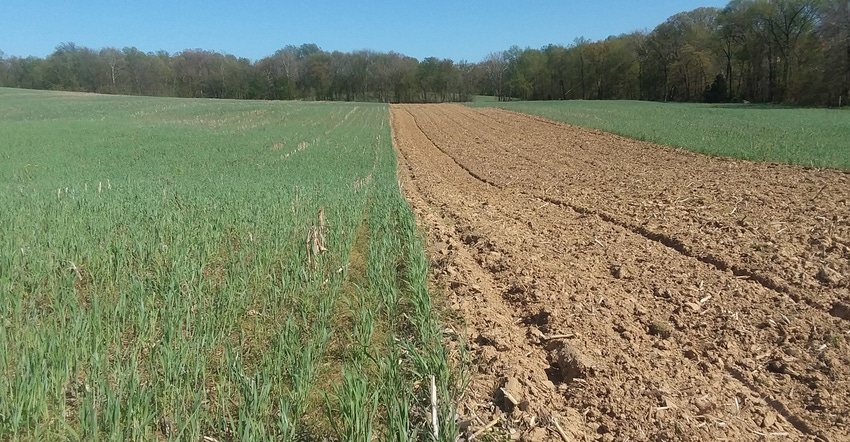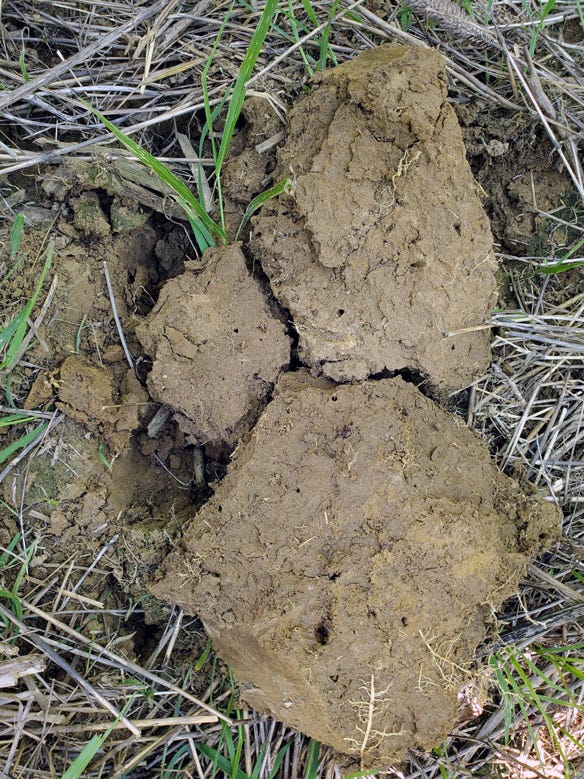
Are there lots of earthworms in your fields? If you don’t find many, have you ever asked yourself why they don’t set up housekeeping in your soils?
The Dubois County Soil and Water Conservation District has a story to tell about earthworms and soil health. The district joined a partnership with Vincennes University at Jasper, Ind., and developed demonstration plots, installing soil and water conservation practices on the farmland that adjoins the campus. The project is called the Land Stewardship Initiative (LSI).
Recently, Alan Smock, one of the Dubois County supervisors, snapped a photo showing all kinds of earthworm holes and channels in the soil surface. That picture led to a story about how earthworm populations have shifted over the years in various demonstration plots on the farm.
Smock took the picture in the no-till section of the demonstration plot. While earthworms weren’t visible when he took the photo, it’s obvious that plenty of them make their home in this part of the field.

HOME, SWEET HOME: It is obvious many earthworms call this soil home. Alan Smock captured numerous earthworm channels visible in this slice of soil.

While finding more earthworm channels in no-till soil isn’t a surprise, the fact that there were more earthworms in the tilled plot one year may catch you off guard. Melissa Ruschau, LSI project technician with the Dubois County SWCD, explains how earthworms have shifted between plots within the field over time.
“Three years ago, we encountered an anomaly,” she says. “There were more earthworm channels in the tilled strip in May of that year. Looking back, we believe it was because we turned under a cover crop — also referred when used this way as a ‘green manure crop’ — in April. For the first seven years of the LSI project, cover crops were sown on all acres each fall.”
At first, cover crop seed was flown on. Later, it was drilled after harvest. But all plots received cover crops.
Soil experts believe the green manure crop attracted earthworms to the tilled plot. Even though it was tilled three weeks prior, worms will go where there is a food source, experts say.
Since then, cover crops haven’t been seeded on the tilled strip portion of the field. It’s not because they aren’t needed, Ruschau notes. Rather, it’s because the goal is to show the difference between a no-till system with cover crops and a conventional system when it comes to soil health. Adding the cover crop and plowing it under isn’t something that happens on most tilled fields.
“Today, we find worms and worm channels in greater numbers in the no-till area compared to the tilled area of the field,” she says. “We don’t always see the earthworms themselves, because frequently during the year they are too deep for us to find by digging near the surface.
“But we know they’re there because we find the earthworm channels. That’s why Alan thought it was such an important, neat picture to take. Earthworm channels themselves are vital to water infiltration. If you don’t till, you can maintain these critical pathways for rainfall.”
Read more about:
No tillAbout the Author(s)
You May Also Like




